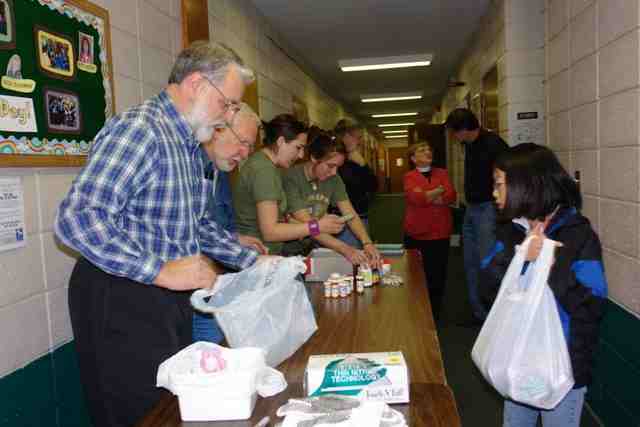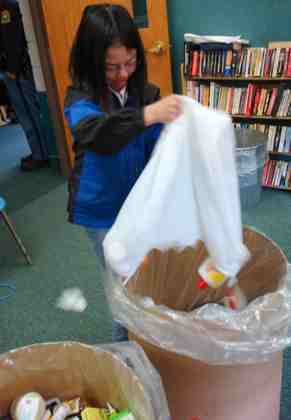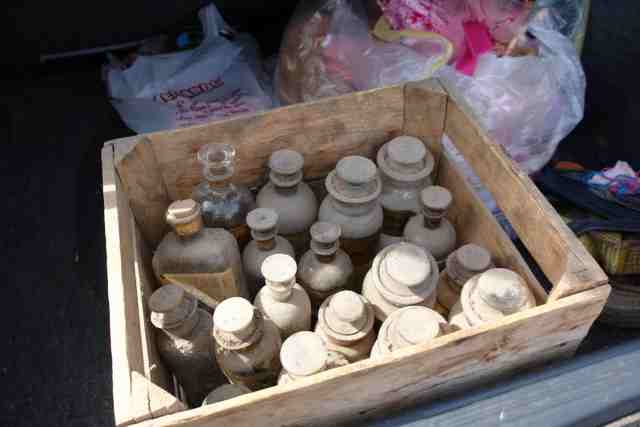
Pharmaceuticals in the water supply likely are responsible for crises of sexual mutation in fish found in the Potomac River and deformed frogs in Wisconsin, according to Environmental Protection Agency studies.
That’s why the EPA is now funding efforts to help Americans dispose of their old and unwanted pharmaceuticals in a safe manner.
Last month in honor of Earth Day, 2,400 residents in Michigan collected one ton of pharmaceuticals and personal care products and delivered them for proper disposal instead of flushing them down the drain and into our water supply…
Thanks to the third annual Earth Keepers’ Clean Sweep campaign, 400 volunteers, including 40 Northern Michigan University students, collected tens of thousands of drugs, pills and personal care products, and pulled off what the EPA called “the largest geographical pharmaceutical collection in U.S. history.”
Nineteen drop-off sites spread across a 400-mile area, in all 15 counties of Michigan’s Upper Peninsula, were opened on a sunny Saturday morning, April 21, to collect the barrels and bags of unwanted drugs in preparation for disposal.
Recent nationwide studies found 80 percent of rivers sampled “tested positive for a range of pharmaceuticals including antibiotics, birth control hormones, antidepressants, veterinary drugs and other medications.”
Michigan’s lakes and rivers are world renown for their walleye, pike and trout though people are finally waking up to how important their actions are in maintaining the fishing habitat.
“Most treatment plants are not designed to filter out these medications,” according to Carl Lindquist, executive director of the Superior Watershed Partnership, and co-founder of Earth Keepers, who coordinates the technical aspects and writes government grants for the group.
The 19 sites collected “the whole gamut” of over-the-counter and prescription medications including a wide range of narcotic pain killers, sleeping pills, syringes/needles and antibiotics.
Pharmacists and law enforcement officers were present at all collection sites to ensure security and proper collection of the pharmaceuticals, some of which had a street value of $500,000, Lindquist said. The public also turned in a wide range of personal care products like suntan lotions, shampoos, cosmetics and soaps.
140 CHURCHES AND HOUSES OF WORSHIP SIGNED COVENANT THAT CREATED EARTH KEEPERS
One participant said the interfaith aspect of this project has given it a unique energy and power. The Earth Keepers is a faith-based environmental movement founded on the idea of bringing together all religions, including native American traditions, to preserve the Earth in active ways.
Over the past four years Rev. Jon Magnuson activated nine different faith communities along with the Keweenaw Bay Indian Community to accomplish the massive Clean Sweeps each April. Working with a single purpose are Catholics, Episcopals, Lutherans, Presbyterians, United Methodists, Unitarian Universalists, Baha’is, Jews, and even Zen Buddhists, from 140 congregations throughout the upper peninsula with 130,000 members.
 “We are in trouble with the way we live on the Earth, we have lost our balance” but projects like the clean sweeps are one example of humans correcting man-made problems, said Rev. Magnuson, founder of Earth Keepers and the head of Lutheran Campus Ministry at Northern Michigan U.
“We are in trouble with the way we live on the Earth, we have lost our balance” but projects like the clean sweeps are one example of humans correcting man-made problems, said Rev. Magnuson, founder of Earth Keepers and the head of Lutheran Campus Ministry at Northern Michigan U.
Wiese Martin, an environmental scientist and Presbyterian, suggests we need a systematic way to routinely and safely dispose of unused and unwanted medications but, he said, “An organized means for collection and disposal just does not exist.”
Pastor Jim Balfour, of United Methodist Church of St. Ignace appreciated the Earth Keepers literature that was passed out to the public because it helps “people understand how many of the common items of our daily lives can be a threat to the environment when they have out lived their usefulness.”
Also active in the Clean Sweep was the non-profit company Thrivent Financial for Lutherans, which donated $15,000 to the cause along with 150 volunteers, and the Cedar Tree Institute, a Marquette, Michigan non-profit environmental group.
CLEANING OUT MEDICINE CABINET CLEARS DRUGS — AND MEMORIES
Katherine Geier removed all the narcotics from her home, delivering OxyContin and other medication to the collection site at St. John the Evangelist Catholic Church in Ishpeming.
“My mother had become addicted to prescription pain killers and sleeping pills, that I ended up hiding them from her,” Geier said. “So I had all these narcotics and didn’t know what to do with them. I didn’t want to flush them down the toilet.”
Some participants held medications “for many years after the death of a relative,” said Jill Wiese Martin, site manager and a member of the First Presbyterian Church in Escanaba, MI.
Catholic Earth Keeper member Kyra Fillmore, a 29-year-old mother of two small children, said “People were unloading medicines from deceased relatives or from past illness. I’m grateful that Earth Keepers could provide a comfortable place for people to, in a sense, release past pains and help keep our water clean as well.”
Many rivers in the Michigan area are world renown walleye fisheries and vulnerable to the toxins that collections like these remove.
Mary Klups of Ontonagon County brought in several types of pain and blood pressure medication, including two bottles of morphine, leftover from her late husband’s cancer treatment and kept by her until she could dispose of them in the right way.
“I also have several of my own medications including some very expensive medicine that did not work out because I had an allergic reaction to it,” Klups said. “I really appreciate having a way to get rid of all this.”
White Pine pharmacist Chuck Blezek said “for years we told people to flush old prescriptions down the toilet – it is only lately that we have found out that it is the wrong thing to do.”
Site coordinator Phil Hansen said many participants collected from their family and friends filling large bags. Most, he said, were previously “unaware that throwing away medicine or flushing it was harmful.”
ANTIQUE PHARMACY BOTTLES RESCUED FROM BASEMENT
 Some of the medication was over 100 years old, including 18 large dust-covered antique bottles filled with liquids and powders that Lutheran Mary Sloan Armstrong of Harvey brought to the Messiah Lutheran Church collection site in Marquette.
Some of the medication was over 100 years old, including 18 large dust-covered antique bottles filled with liquids and powders that Lutheran Mary Sloan Armstrong of Harvey brought to the Messiah Lutheran Church collection site in Marquette.
Armstrong said the medicines – some with Latin labels – belonged to her late father J.K. Sloan, who ran Sloan’s Pharmacy in Galva, Illinois for decades prior to his death.
“These are drug bottles that were in the basement of my dad’s pharmacy,” said Armstrong. “We’ve had them for about 30 years (since her father’s death) and haven’t done anything with them. We thought this would be a good chance to get rid of the contents.”
Pharmacists gathered around Armstrong’s car to get a look at the century old drugs that had a variety of deteriorating cork-like lids. “These powders and liquids are considered hazardous waste but they are drugs.”
One person dropped off a “turn-of-the century” black folding case containing eight small bottles filled with powders to a collection site in Marquette.
“This is what would have been a doctor’s traveling pharmacy,” said pharmacist Kent Jenema, while showing the leather zippered case to an EPA observer. “This has a lot of old patent type medications from mostly natural sources that predates some of the pharmacy that we know today.”
CLEAN SWEEPS IN 2005 AND 2006 COLLECTED TONS OF ELECTRONICS AND TOXIC CLEANERS
In 2006, the Clean Sweep focused on electronic waste, like old or broken computers, printers and cell phones. Organizers expected to collect 100 tons and instead were shocked by more than 320 tons of equipment dropped off in just three hours by an estimated 10,000 U.P. residents. It took 9 semi trucks to haul the e-waste to an EPA approved recycling center.
In 2005, the first Clean Sweep collected 45 tons of household poisons and vehicle batteries. The hazardous waste, including over two pounds of mercury, were properly disposed of in various ways according to EPA and state guidelines.
Both previous clean sweeps broke EPA collection records for the Great Lakes region, organizers said.
_______________________
Contributing writer – Greg Peterson, Earth Keeper volunteer, media advisor and news reporter
More information at: Earth Keeper TV
The Superior Watershed Partnership
______________________




















[…] microbeads. The endocrine disruptors that are flushed into waterways, have been been suspected by EPA scientists as causing malformed frogs and mutations in […]